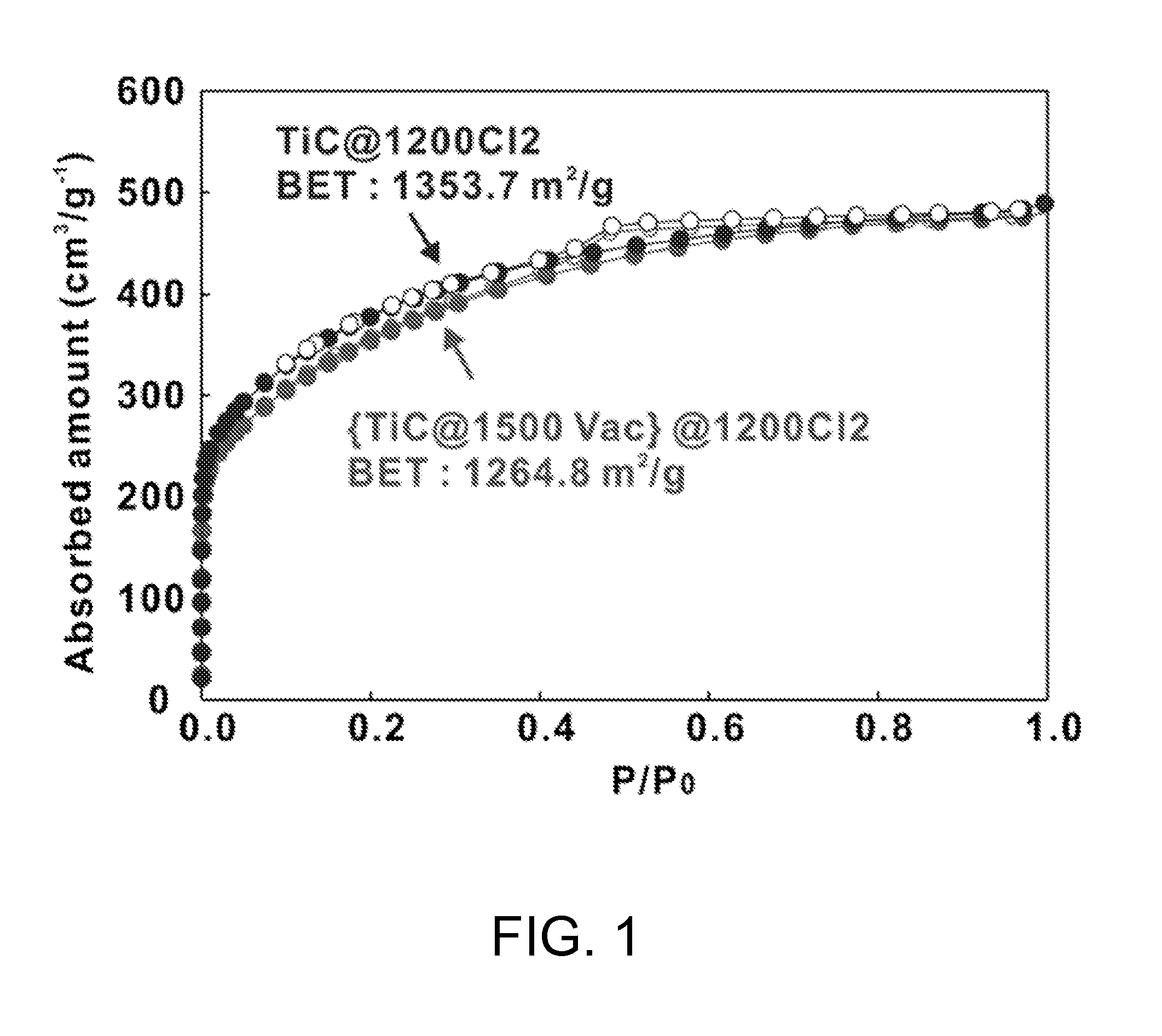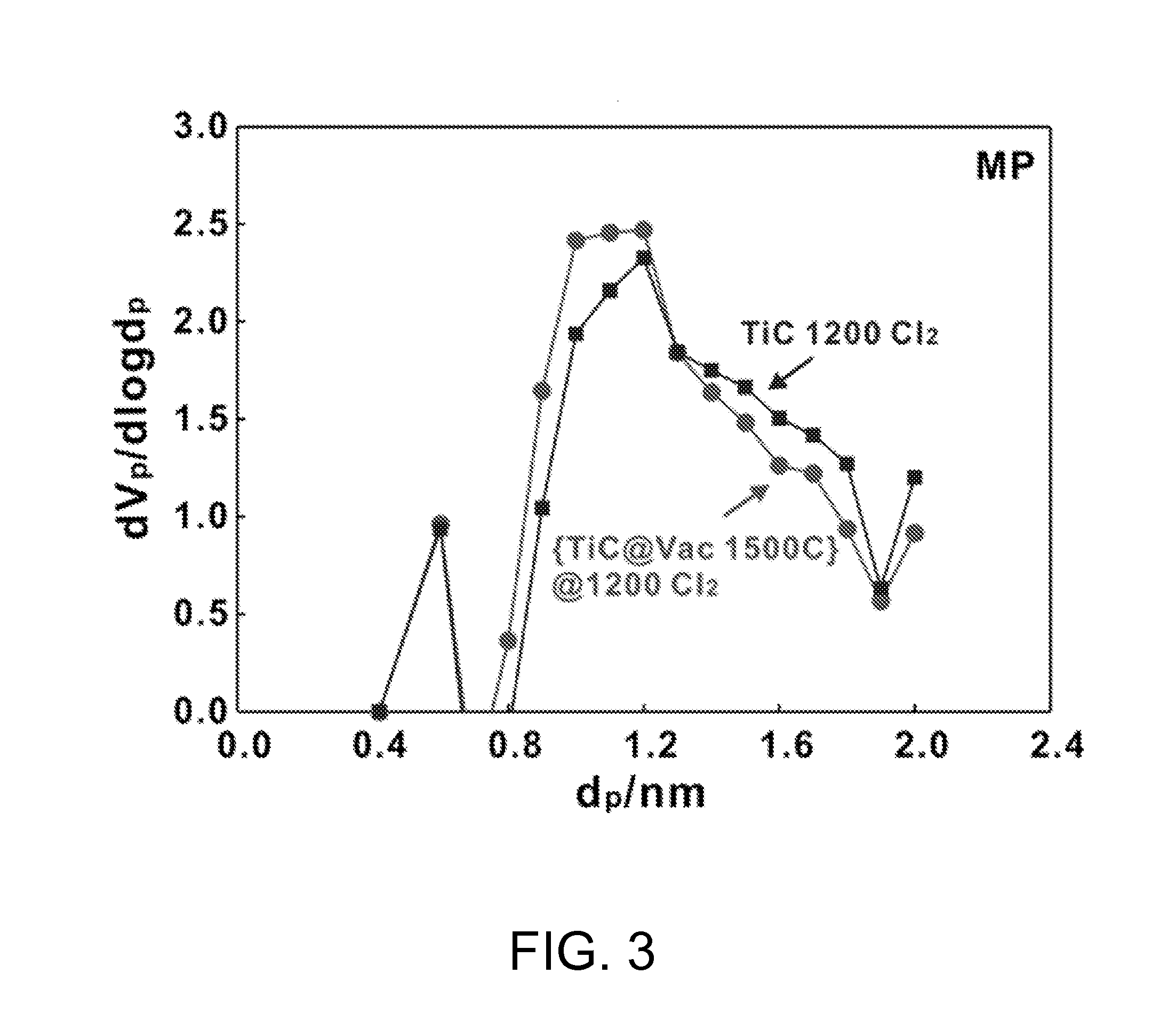Carbide-Derived Carbon Manufactured by Using Heat Treatment at Vacuum and Method Thereof
a technology of heat treatment and carbide, which is applied in the manufacture of electrodes, cell components, bandages, etc., can solve the problems of internal short circuit or deterioration of cycle properties, high energy density and low self-discharge rate, and achieve stable charge/discharge efficiency
- Summary
- Abstract
- Description
- Claims
- Application Information
AI Technical Summary
Benefits of technology
Problems solved by technology
Method used
Image
Examples
example 1
Preparation of Vacuum-Treated TiC-CDC via Thermal Treatment at 1500° C. in Vacuum and Thermochemical Reaction with Cl2 at 1200° C.
[0041]Useful as a carbide compound, TiC was thermally treated at 1500° C. for 4 hr in a vacuum, thus obtaining vacuum-treated TiC, which was then thermochemically reacted with Cl2 as a halogen element-containing gas at 1200° C. for about 3 hr and then annealed with H2 gas for about 2 hr, yielding vacuum-treated TiC-CDC.
[0042]The process for reacting the carbide compound with the halogen element-containing gas to prepare CDC is represented by Scheme 1 below.
[0043][Scheme 1]
MaCb(s)+(c / 2)Cl2(g)→aMClc↑(g)+bC↓(s)
[0044]In Scheme 1, M indicates a metal, C indicates carbon, and a, b and c indicate stoichiometric ratios.
PUM
 Login to View More
Login to View More Abstract
Description
Claims
Application Information
 Login to View More
Login to View More - R&D
- Intellectual Property
- Life Sciences
- Materials
- Tech Scout
- Unparalleled Data Quality
- Higher Quality Content
- 60% Fewer Hallucinations
Browse by: Latest US Patents, China's latest patents, Technical Efficacy Thesaurus, Application Domain, Technology Topic, Popular Technical Reports.
© 2025 PatSnap. All rights reserved.Legal|Privacy policy|Modern Slavery Act Transparency Statement|Sitemap|About US| Contact US: help@patsnap.com



